Inside a Queen Conch Nursery in Puerto Rico That May Help Save the Iconic Species
The region’s first and only locally-run hatchery provides a boost for both fishers and the imperiled royal sea snail.
This piece was originally published in Hakai Magazine and appears here as part of our Climate Desk collaboration.
As the blue-and-white skiff cuts across the bay to Naguabo on the eastern tip of Puerto Rico, fisherman Gabriel Ramos is the first to come into focus, waving his arm in excitement. The closer the boat skips to shore, the more details emerge: dive tanks clanking in the hull, gaffs for catching pulpo (octopus), spearguns for pargos (snappers). Only at the dock does the day’s haul become visible, in two buckets at the bottom of the boat. One is filled with slabs of carrucho—queen conch. Carrucho is a prized catch. Selling for US $14 per pound, it’s the priciest item in the fish markets along El Malecón de Naguabo, the nearby waterfront promenade known for fresh seafood.
Today’s conch prize, however, is not the sliced white flesh heaped in the first bucket. Ramos is pumped about what looks like a clump of shelly sand, sealed in a sandwich bag and floating in seawater at the bottom of the second bucket. It’s a string of conch eggs.
A mother queen conch lays half a million eggs over a day or so in a gelatinous strand that, unfurled, would stretch longer than a semitruck trailer. She camouflages the strand with sand as she goes, fussing it into a tidy pile that could pass for a bit of coral or shell. Laying nine or so masses each season, she will send nearly five million larval conchs a year into the sea. Fewer than one percent will survive to grow into the Caribbean’s favorite marine snail, with the glossy pink shell and sweet meat eaten across the 26 countries in its range.
A queen conch shell can grow as big as a football. Its handle-like cavity gives it a similarly satisfying grip, though it weighs closer to a brick. That heft makes queen conchs easy to spot and catch—so easy that overharvesting for their meat and shells has collapsed populations throughout their habitat in the Caribbean Sea and Gulf of Mexico. The United States was the first to lose its queens, which once thrived at the southern tip of Florida. They have not rebounded despite Florida’s ban on commercial conch fishing since 1975 and all harvesting since 1986. After the state ban, the big sea snails were listed under the Convention on International Trade in Endangered Species of Wild Fauna and Flora to monitor and limit trade. The losses have only hastened. Scientists have warned that the once-massive conch herds of The Bahamas—which exports nearly all the conch meat consumed in the United States—have now thinned below the minimum number needed for the animals to breed.

Saving the species will take bold actions, scientists say, from shrinking the harvest to protecting greater swaths of the seagrass beds where conchs gather in herds to graze and breed. That is no less true in Puerto Rico, where the animals are in decline but slightly better protected than in The Bahamas—with a closed season each summer to allow the conchs to reproduce. Ramos represents another key piece too often missing from the conservation puzzle: giving the fishers a serious role in recovery efforts, and compensating them for that work just like every other expert involved.
Ramos, one of an estimated 800 fishers in Puerto Rico who dive for carrucho as a main source of income, is part of this new reciprocal model that pays him more for collecting eggs than he earns from harvesting conch. Scuba diving over a patch of seagrass this morning in about 15 meters of water, Ramos grabbed a live queen conch—destined for market until he saw that it was a breeding mother. A sandy egg pile lay beneath her shell. Instead of slicing out the carrucho meat with his knife, Ramos teased out a quarter of the egg mass with his fingers, slipped it into the sandwich bag, and returned the conch to her remaining sea-bottom brood.
At the dock, still clad in his wetsuit, Ramos hands up the bucket with the conch eggs as if it holds a donated organ on its way to a transplant. Conservation biologist Raimundo Espinoza grabs the bucket and carries it into an aging dockside building. The two-story complex is home to the Naguabo Fishing Association, one of about 40 public-private fishing cooperatives in Puerto Rico that support members by buying and marketing their seafood. Naguabo’s is one of the island’s oldest fishing co-ops, founded more than half a century ago by the grandfathers of some of the fishermen who belong to it today.
Parts of the complex and dock are oddly twisted or missing—reminders of Hurricane Maria’s direct hit in 2017 and the risk of future storms. But behind their repaired seafood market and gear-storage lockers, members of the association have responded to the hurricane with an addition their grandfathers might not have imagined: a hatchery for growing their own queen conchs.
Half indoor lab, half open-air courtyard, the Naguabo Queen Conch Hatchery burbles in an orderly network of pipes and filters, deep tanks and shallow basins, beakers and carboys swirling with algae. In the lab, Ramos and Espinoza peer through a microscope at sections of the egg strand under the keen eye of Megan Davis, a marine research professor at Florida Atlantic University (FAU) Harbor Branch Oceanographic Institute who designed the hatchery and oversaw its construction by the fishers in 2021. Funded by the National Oceanic and Atmospheric Administration (NOAA) Fisheries’ Saltonstall-Kennedy grant program that supports fishing and marine aquaculture, the hatchery is a partnership among the fishing association; Davis’s queen conch lab at FAU; and Conservación ConCiencia, a Puerto Rico–based NGO founded by Espinoza to tackle poverty as a means to long-term marine conservation.

The egg strand swells with clustered cells that, through the hatchery’s microscope, look like glistening pearls. The larger clusters are older embryos, meaning the mother conch laid them when she started the strand, likely the day before. Those with just two or four of the pearly cells are the youngest; perhaps laid just this morning. If the conch embryos survive, they will hatch in four days. In 40 years of growing queen conchs, Davis has learned that the larvae tend to wriggle from their eggs at about 9:00 at night. Evolution has taught them that’s when they can swim free into the ocean currents with fewer predators lurking about.
To describe the hell that began in the early morning of September 20, 2017, fisherman Julio Ortiz holds his hand up to his neck, the height of the sea when it entered his home. When Hurricane Maria drew a bead on Puerto Rico, Ortiz and many other residents felt sure it could not be worse than Hurricane Irma, which they’d ridden out two weeks before. They are accustomed to inundation from sea, land, and sky. Naguabo is nicknamed El Pueblo de los Enchumbaos—the Town of the Drenched—for its six major rivers and the heavy rains that develop from the sea on one side and the tropical rainforest El Yunque on the other.
Maria arrived less like other hurricanes he’d experienced in his 59 years, Ortiz says, and more as if the sea itself rushed his barrio. Ortiz had secured all his fishing gear in his locker at the Naguabo Fishing Association before sheltering at home across the bay. He’d tied down his fishing boat in the front yard. His wife had taped plastic over all the windows—so the couple did not see the ocean rushing their home. When the seawater burst through the windows, they glimpsed their car and truck submerged out front. Ortiz’s fishing boat lurched on its tether. “For 30 seconds, I was lost,” Ortiz says. The couple ran upstairs. A few hours later, when the water began to drain, they ventured back down and discovered how lucky they were to have lost only earthly belongings.
Homes and shops lay in ruins. Cars and boats were tossed and twisted. Power poles and trees had toppled in winds later estimated above 215 kilometers per hour; weather instruments built to withstand that speed were destroyed. Naguabo, like the rest of Puerto Rico, was left with no power, no cell service, and few navigable roads. Ortiz and fellow fishing association members, several now homeless, began clearing debris to reach their headquarters. When they finally arrived, it looked as if a bomb had exploded, says association president Carlos Velazquez. Maria had blown out the windows and doors and destroyed much of the dock. The gear lockers were rubble and their contents lost. Every boat had been swept out to sea.

As a fishing village, Naguabo was used to securing most of its protein locally—residents buy fish, conch, lobster, and shrimp at the many small fish markets or from food trucks and cafes. But without power, all of the seafood in the town’s freezers spoiled. Without boats or gear, the fishers could not head out for more. Food became scarce as days and then weeks passed with no outside help. Collapsed bridges and cell networks meant residents were stranded without word from either the US government or the territorial government 75 kilometers away in San Juan.
Espinoza, a young father with a special interest in social justice, drove into this chaos two weeks after the storm. A native of Ecuador whose family moved to Puerto Rico when he was in college, Espinoza earned degrees in conservation biology and sustainable development in the United States before moving to San Juan for a NOAA coral reef management fellowship. He later joined the Nature Conservancy (TNC) and established its Puerto Rico program, becoming the first TNC employee in the territory. But he missed working directly with fishers. From his earliest field experiences in college—like the time he showed Costa Rican kids how they could make more money by guiding tourists to sea turtle nests than by selling the turtle eggs—Espinoza saw how putting people at the center of conservation projects brought the best, most lasting results. He left TNC and founded Conservación ConCiencia in 2016, the year before Maria.
Now, he made his way slowly through downed power lines and trees to the fishing association complex at El Malecón, his Fiat SUV packed with water and food. It was some of the first aid to arrive in Naguabo. “He came just when we needed him,” Ortiz says. Hurricane Maria’s human toll would reach 2,975 dead across Puerto Rico, including indirect deaths such as kidney patients who couldn’t access dialysis. Given that scale, it was easy to overlook what happened to marine life as the worst hurricane in the island’s modern history tore through the sea. When the fishers finally got out to their grounds, Velazquez says, they found Maria had ripped up seagrass beds where queen conchs herd. It had shattered reefs where fish gather. It had smothered conchs and lobsters with sand and silt. And it had sent tonnes of debris into marine habitat—including hundreds of traps that were now lost and inadvertently killing sea life.
Working with Naguabo’s and other fishing associations across Puerto Rico, Espinoza set up two emergency relief projects with funding from the Ocean Foundation, the U.S. National Fish and Wildlife Foundation, and the NOAA Marine Debris Program. One paid fishers to retrieve lost gear on the seafloor, including the traps—most of which turned out to be illegal. The second project replaced lost fishing gear with sustainable gear. For months after the storm, Espinoza paid fishers to dive for errant traps, nets, and other gear that had been swept out to sea.

These projects were the most positive experience Naguabo’s fishers ever had with scientists, Ortiz says, even going back to his father and grandfather’s time. “We’ve been through a lot of biologists and we’ve had bad experiences,” Ortiz says, including scientists who convinced them to show them their fishing grounds—only to advise the government to close those grounds. “[Raimundo is] the first biologist we’ve gotten along with.”
So when Espinoza brought them the idea of working with an aquaculture scientist to rebuild their association with a queen conch hatchery—with the fishers paid to help construct it, run it, and harvest the conch eggs—they were all in.
In the hatchery, the conch eggs collected by Ramos now hang in an incubation cylinder in a larger tank of seawater. The embryos, four days old, have developed tiny black eyes and a wee orange foot. They begin to spin inside their egg capsules—as if readying for the race ahead. Right on schedule—it is 9:00 on a Friday night—the embryos start to hatch into what are known as veligers, atom-shaped free swimmers that drift for kilometers on ocean currents in the wild. Thousands of veligers fill the tank like animated sand grains. They dart with the flurry of newfound motion. They glint in the dark seawater like the stars of the universe on a pitch-black night.
Megan Davis has grown queen conchs ever since her first job out of college managing an experimental conch hatchery on the Turks and Caicos Islands at the age of 21. She was then tall and athletic, with long brown hair, an easy smile, and an idealistic goal to help save the pink conchs she had loved since childhood vacations sailing the Caribbean with her family. At 63, Davis is still tall and athletic, with the same smile, though her long hair has turned silver and her goal has developed into a blueprint for a locally run hatchery in every nation that shares its seas with the queens.

That first hatchery, its lab a glorified shed with a windmill, was part of the utopian vision of a navy nuclear engineer turned philosopher-biologist named Chuck Hesse. Before commercial tourism took off in the Turks and Caicos, he saw the islands as a model biosphere for ocean conservation, alternative energy, and aquaculture. In her two years running the outpost from 1981 to 1983, Davis proved that, under the right conditions, queen conchs will undergo their metamorphosis—from pearly eggs to swimming veligers to shelled infants—in the lab. Once they’re tiny sea snails with four-millimeter-long shells, they can be moved to an outdoor nursery, where they take another year to grow into finger-long conchs. Bulking into a breeding-age queen can take three years longer or more. Like human teenagers, some conchs mature more quickly than others; shell thickness is a better gauge of adulthood than age.
In 1983, Hesse leased government land, raised millions of dollars from investors, and built the world’s first commercial queen conch farm on the island of Providenciales. Davis was a cofounder and the farm’s chief scientist. Headquartered in a white geodesic dome, Caicos Conch Farm raised millions of conchs in huge round corrals in the shallows, exported conch meat to the United States, and grew into a major ecotourism destination. Davis eventually returned to Florida to earn graduate degrees in marine ecology. New owners took over the operation, with bigger ambitions to expand into fish farms. Hurricanes Irma and Maria battered the utopian dome set against the blue-green sea, and the farm has not reopened since. But the venture helped shape Davis, who has spent the ensuing decades working on conch aquaculture in her FAU research lab and a series of small conch farms around the Caribbean. (She also specializes in sea vegetable crops and makes a mean purslane salad.)
In Portland, Oregon, the summer after Hurricane Maria, during free time at a meeting of NOAA’s Marine Fisheries Advisory Committee on which they both serve, Davis and Espinoza got to talking about their shared interest in artisanal aquaculture. Davis loved Espinoza’s approach of paying fishers for their expertise and labor. He thought locally run queen conch hatcheries would make ideal proving grounds for normalizing compensation to fishers. “There are ways to share benefits—to bring them on board and help them generate income from their expertise—just like the rest of us make a living from our expertise,” Espinoza says. “It is fundamental to making the fishing community part of conservation policy and it is fundamental to environmental justice.”
The Naguabo Queen Conch Hatchery is the 10th that Davis has helped build over these years, but the first to be run by conch fishers and other community members. They broke ground in late 2019 before the pandemic halted construction for a year. After Ortiz made the final touches on the water system last summer and seawater flowed in from the nearby bay, Davis and lab manager Victoria Cassar started training the fishers and Espinoza to raise conchs. Marie Garcia, who is married to one of the fishermen, is learning to oversee the lab. She and the fishers follow a step-by-step, 80-page hatchery manual with user-friendly graphics and photographs. Davis and Cassar wrote the open-source guide during their COVID-19 lockdown, also creating a Spanish version and a series of free videos. To mimic wild habitat, hatchery workers closely control the seawater conditions and culture the two types of algae the veligers eat every day. They monitor and record every step of the queens’ incubation, larval development, and metamorphosis. It is a transformation as royal as that from caterpillar to monarch.
Over three to four weeks, the veligers have sprouted petal-like lobes—first two, then four, then six. They’ve zipped about their tank gobbling algae, which appear golden in their translucent bellies. Now, the six lobes have stretched out to limb-like extremities that allow them to test-land and forage on the bottom. It’s time to transform from free swimmers to bottom-dwelling snails. They need a natural cue such as the presence of diatoms that cover seagrass in the wild. To mimic seagrass beds, Davis and her team prepare a shallow metamorphosis tank with low light and add grass blades covered in diatoms. They sieve the veligers from the swimming tank to the shallow tank. Within a day, the veligers stop swimming, settle to the bottom, and begin to crawl.
The demise of queen conchs is often linked to the rise of consumption in the postwar United States. Rachel Carson observed in the 1950s that even as live conchs were becoming rare in the Florida Keys, the pink shell was “displayed by the hundred at every Florida roadside stand selling tourist souvenirs.” Today in the Keys, native-born residents are still called “conchs,” Key West the “Conch Republic.” The restaurants still fry up conch fritters, and the polished pink shells are still piled in the souvenir shops. But the shells and the meat all come from the Caribbean.
The collapse of the animal Carson described as “an alert and sentient creature” has much earlier roots in colonialism. In 1493, the year after he made landfall in the Caribbean, Christopher Columbus published his letter announcing the discovery of the New World. An eye-catching conch shell centers the foreground in the accompanying illustration, an idealized scene of the people he met. An Indigenous population numbering in the millions across the islands greeted the Spanish with the word taíno. The archaeologist William F. Keegan, who has interpreted the human history from conch piles, petroglyphs, tools, and other artifacts for four decades, says taíno translates as “noble” or “good” and that the people may have been reassuring the Spanish of their good intentions rather than introducing themselves by name.
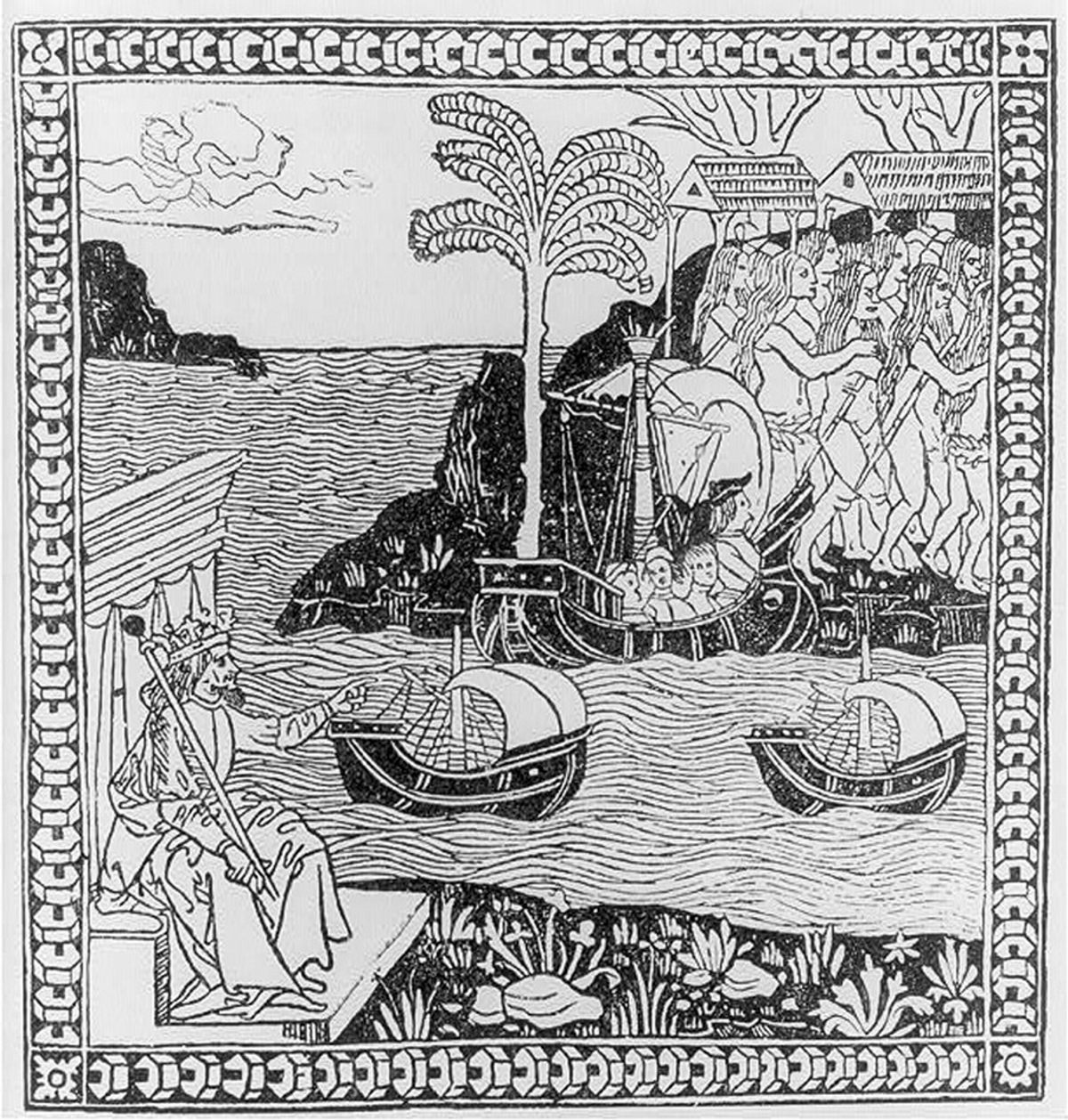
Archaeologists don’t know exactly how many Taíno survived the enslavement, massacres, and diseases that marked the following centuries—though genetic sampling reveals significant Indigenous ancestry in contemporary Puerto Rico. But Taíno stories and artifacts stress the importance of conchs: in their fishing and diving traditions; in the infinite piles of conch they harvested, ate, and honed into tools and jewelry; and in their small spirit objects sculpted into three points—originally inspired by the pointed top of a conch shell.
Evidence of conch overharvesting begins in their time, Keegan says. But the export pressure that precipitated collapse dates to the British Empire that gave the queens their English name. A fashionable 18 year old when she ascended the throne in 1837, Queen Victoria loved the coral-pink shells. (Alive on the seafloor, the conchs are not glossy pink, but muted in a dark fuzz of algae.) She employed her own cameo cutter to make her brooches and commemorative keepsakes; they helped inspire a frenzied demand. Before the end of the century, British scientists warned that the molluscan monarchs were being overfished.
“The profit when converted to cameos and other objets d’art is enormous,” Sir Augustus J. Adderley, Bahamas fisheries commissioner to Britain, wrote in 1883. “I am under the impression that this fish is not so plentiful as it used to be, and that its protection is desirable.” He wanted to advise a closed season to avoid fishing out the queens, “but I fear it is not practicable.”
Political practicalities have eclipsed science ever since. At the Shedd Aquarium in Chicago, Illinois, biologist Andrew Kough has helped quantify the “serial depletion” of queen conchs in the export-heavy Bahamas, research that also identified actions that could save them. Those include a broader network of no-take reserves, harvest limits based on shell thickness, and ultimately, a ban on exports. Bahamian government officials have vowed support for each of those measures. But regulation is a hard sell in a nation with some 10,000 artisanal conch fishers. Without it, Kough and other scientists say The Bahamas will follow the Florida Keys and lose the fishery altogether.
Science may be able to raise healthy conchs and return them to the sea, Kough says. But there is no evidence that releasing cultured juveniles could replicate the epic larval journeys seen in the wild. The scale of natural breeding as billions of larvae drift for kilometers in the currents “far exceeds anything we could do in aquaculture,” he says. Likewise, there is no saving a conch population if it falls below the minimum threshold for reproduction, a number directly tied to fishing pressure.
Davis agrees that hatcheries alone can’t save the queens. But she believes aquaculture can take some pressure off wild conchs—and that its role in building a conservation ethos is significant. The Naguabo hatchery includes an outdoor touch tank where schoolkids and tourists can pick up a queen, maybe getting a glimpse of its long foot or tentacled eyes. A Bahamian team is now outfitting a mobile hatchery on Exuma based on Naguabo’s design, to be run with a similar model, by local fishers and community members. “Regulation is really the only other avenue—and that’s up to the countries, to have the management in place and the national parks and marine protected areas,” Davis says. “But to see the fishermen bring back a significant batch of eggs, and then to see those healthy conchs metamorphose in 21 to 28 days, feels like a huge accomplishment.”
After metamorphosis, the conchs are still microscopic and sport a perfect shell. They’ll be cared for on screened trays in a special tank for the next three weeks, a time of rapid growth. Having resorbed their wriggling limbs, the tiny creatures grow a clawed foot and develop other molluscan features: a snout-like proboscis to eat, a gill to breathe. With daily feeding and observation and a gentle seawater spray, about half will survive to the length of three or four millimeters needed to move from the lab to the sunlit nursery outside.
The Taíno gave us the word hurricane. They called the “centers of great wind” huracãn—hura for wind, ca’n for center. They depicted the storms on pottery in a simple sideways S—clockwise-spinning arms with a face at the center—a form that looks remarkably like today’s satellite images of hurricanes churning across the sea. Keegan, the archaeologist, says Taíno iconography and innovation reflect nothing so much as a people seeking balance—from their farming and fishing, which employed fish-pen aquaculture on some islands, to their deities, which included a nourishing god of the seas and his evil twin who was called Juracãn.
Modern fishers also seek balance, says Ortiz. The fathers and grandfathers who founded the association always taught their sons to leave carrucho alone when they are laying eggs. Ortiz raised his three sons to do the same. For the two who remain in the business, Ortiz says, climate change has become the single greatest challenge by far. Worsening storms have cut back fishing from about five days a week in his childhood to about three days today. His estimate checks out with climate scientists who have found that rainfall during heavy storms has increased by 33 percent in Puerto Rico in the last half century.
The hatchery is a place to work when it’s too stormy to fish. It is a source of local protein for times when food becomes scarce. It is for people as much as for conchs, a small, safe harbor in the Town of the Drenched.
The juvenile conchs, shells large enough to balance on your fingertip, are now moved to shallow blue tanks stacked like shelves in the courtyard-style nursery. A gauzy fiberglass roof lets in the sun. Sand covers the tank bottoms to replicate the seafloor. The juvenile queens burrow into the sand and stay buried for much of their first year of life, peeking out with periscope eyes.
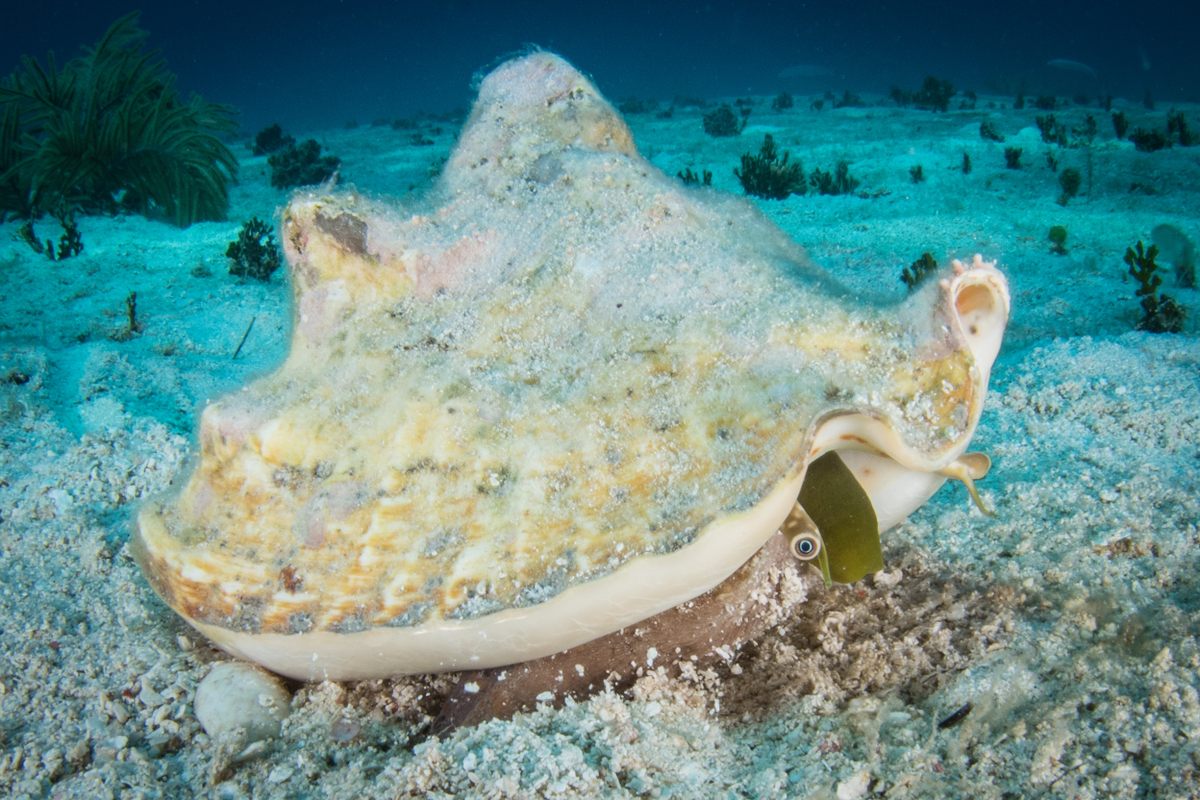
Gastro Obscura covers the world’s most wondrous food and drink.
Sign up for our regular newsletter.



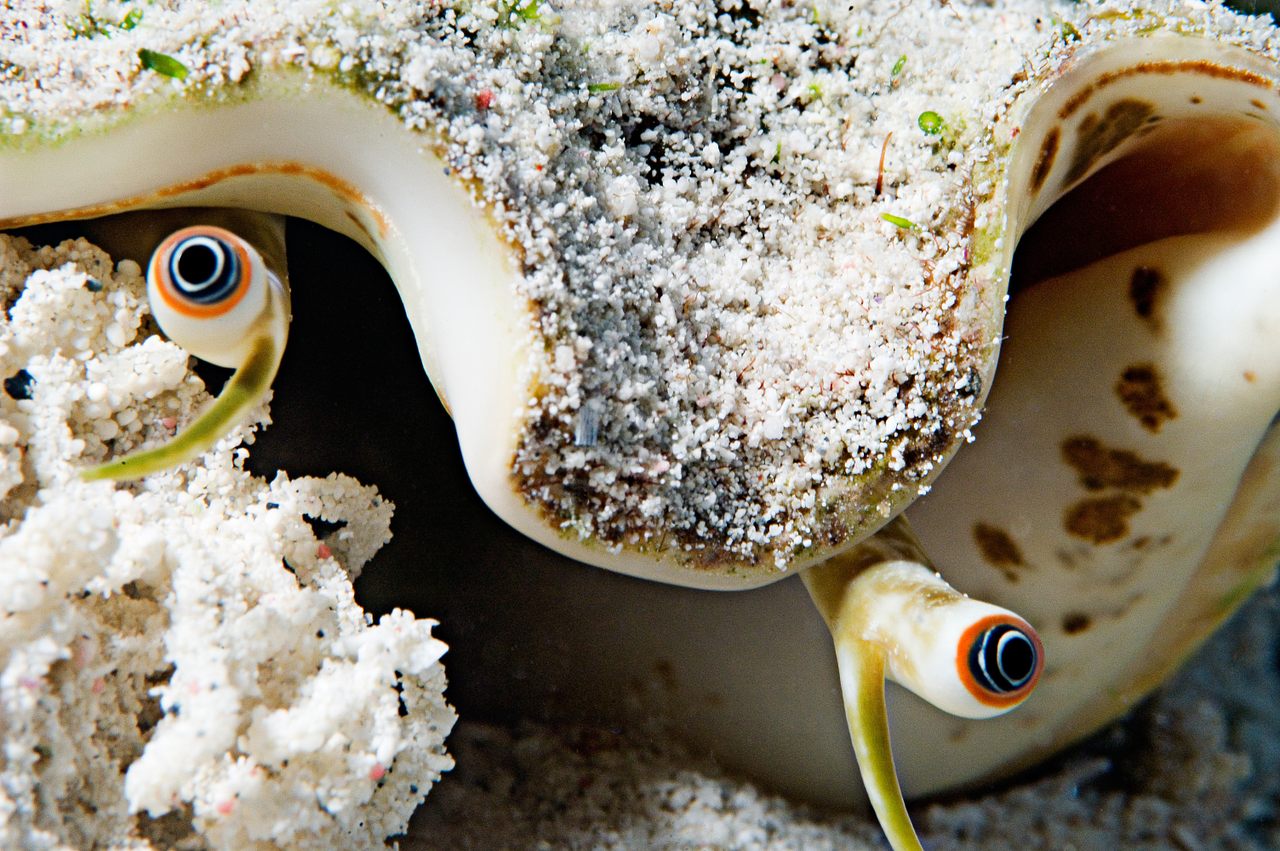
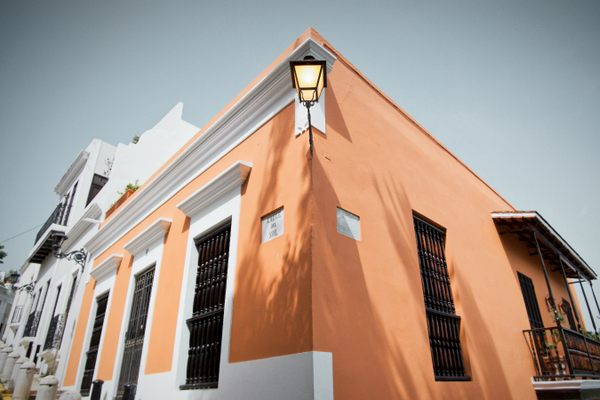



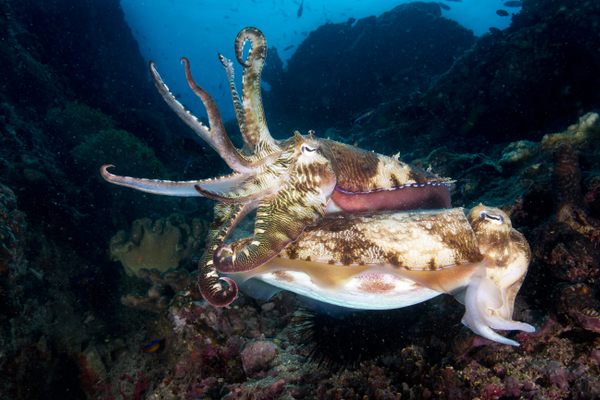


































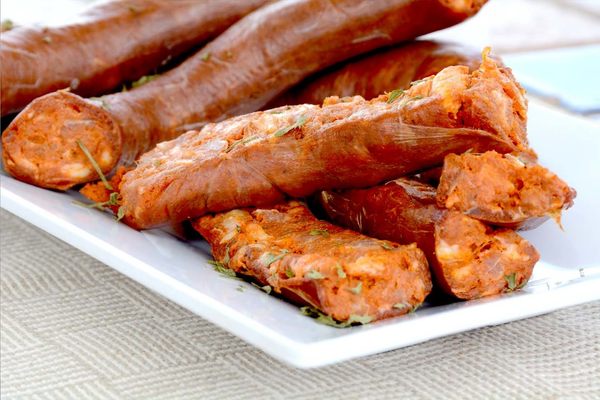




Follow us on Twitter to get the latest on the world's hidden wonders.
Like us on Facebook to get the latest on the world's hidden wonders.
Follow us on Twitter Like us on Facebook